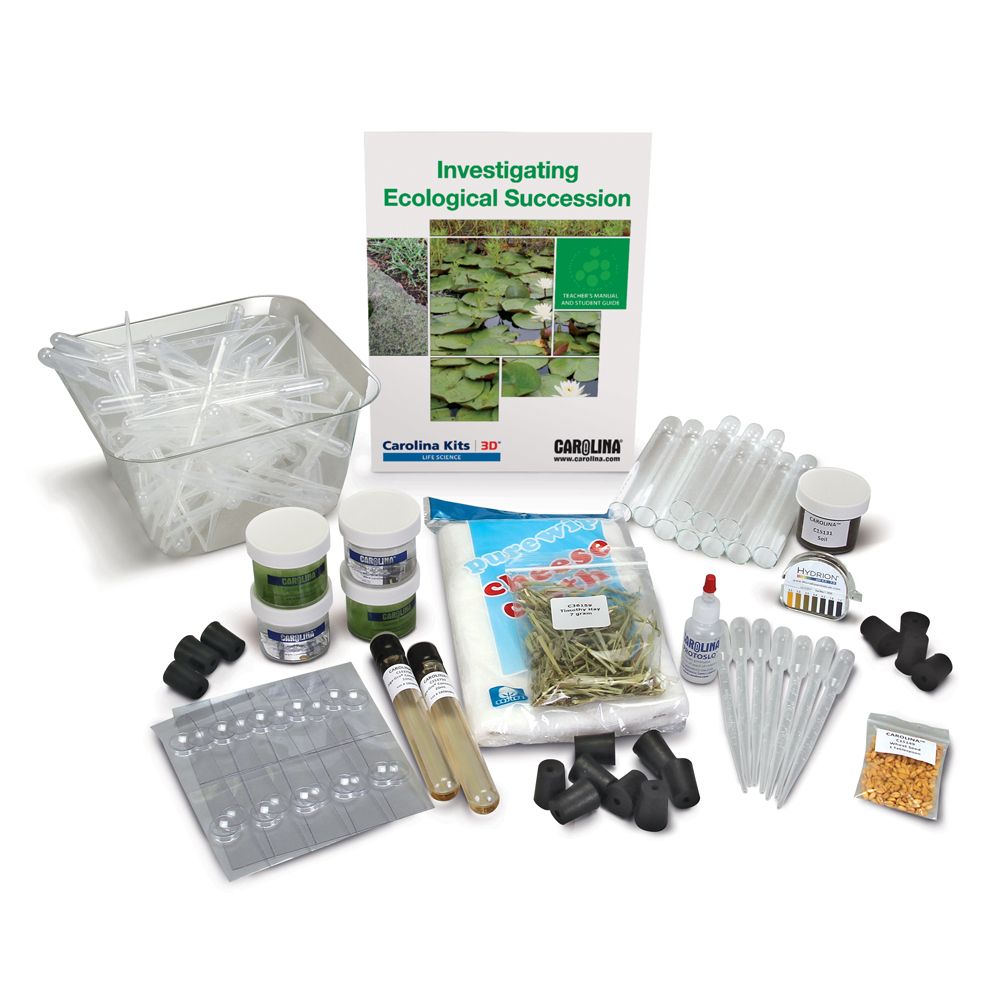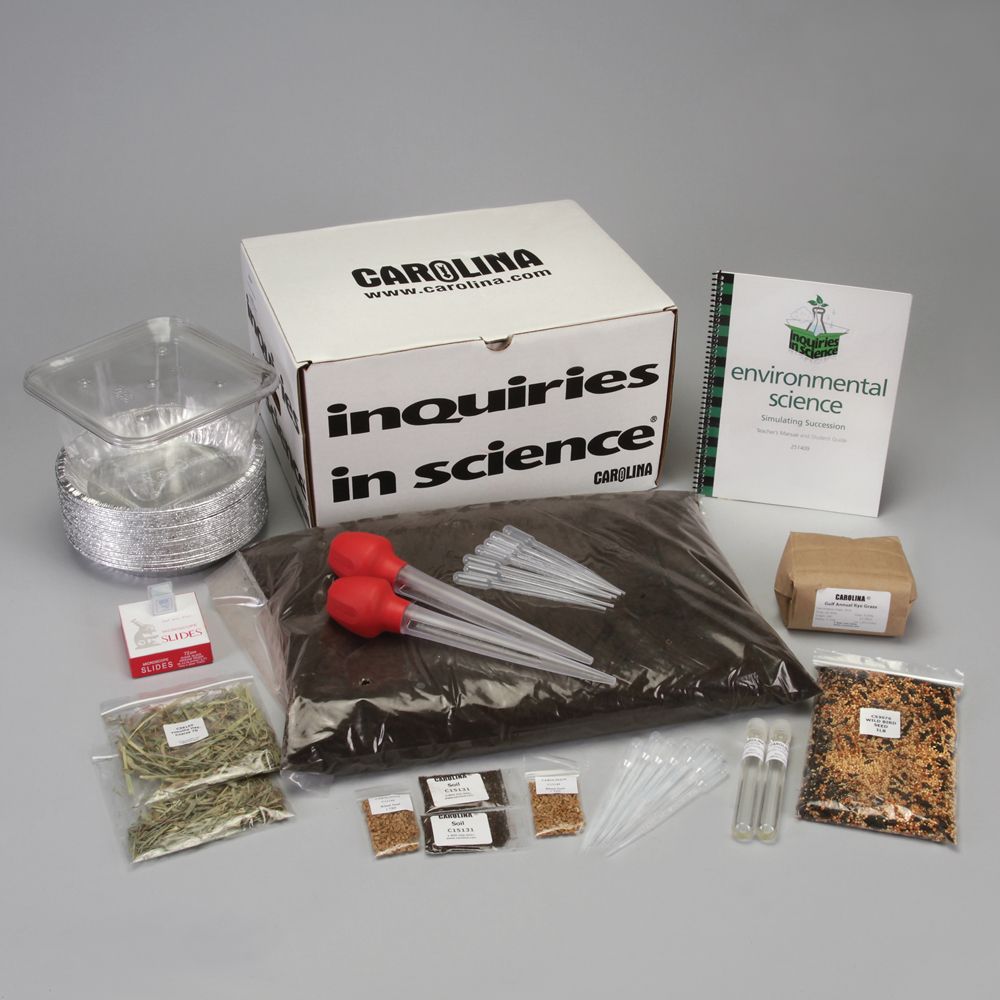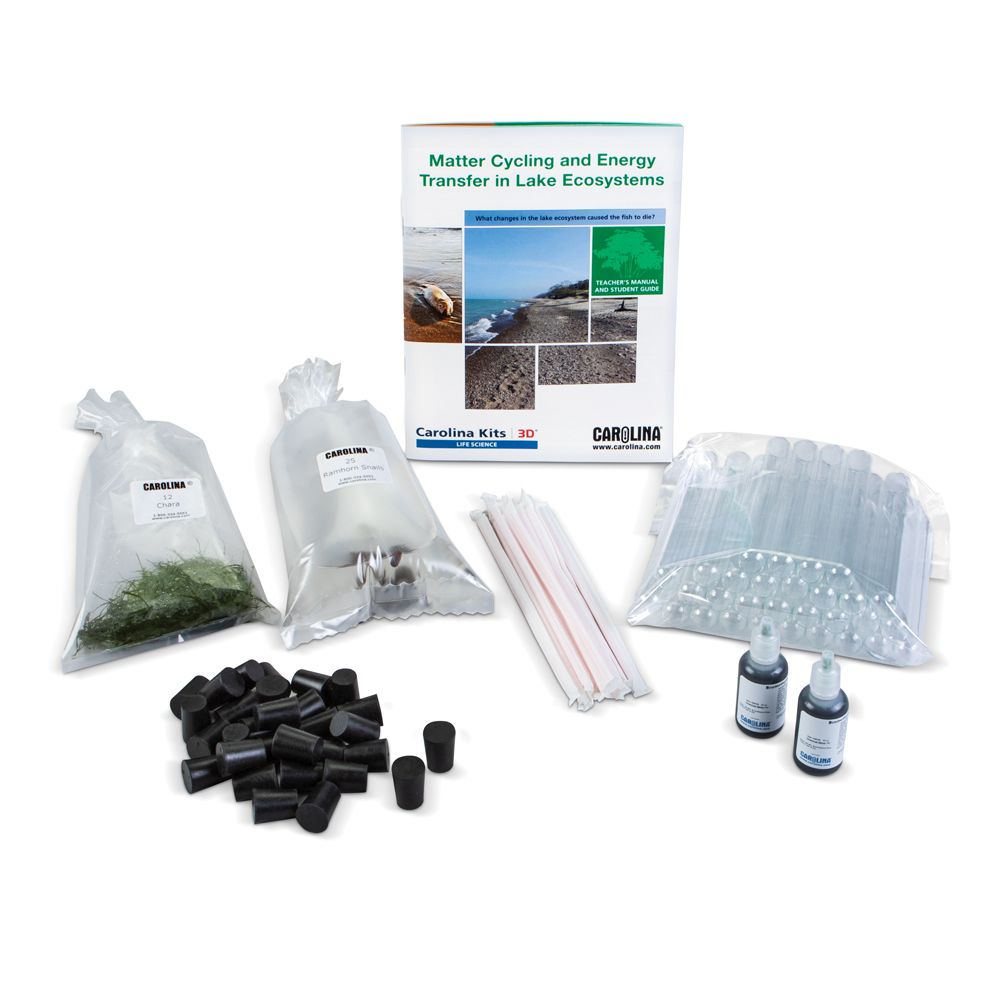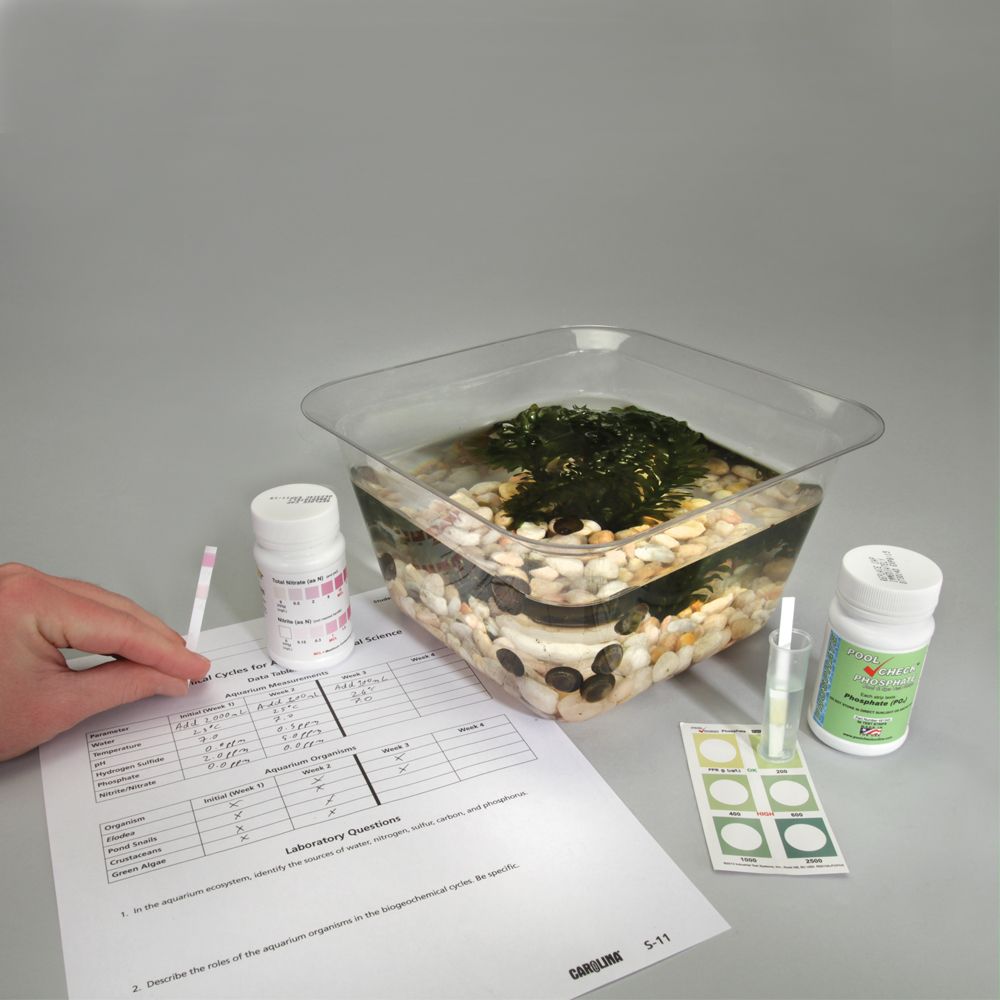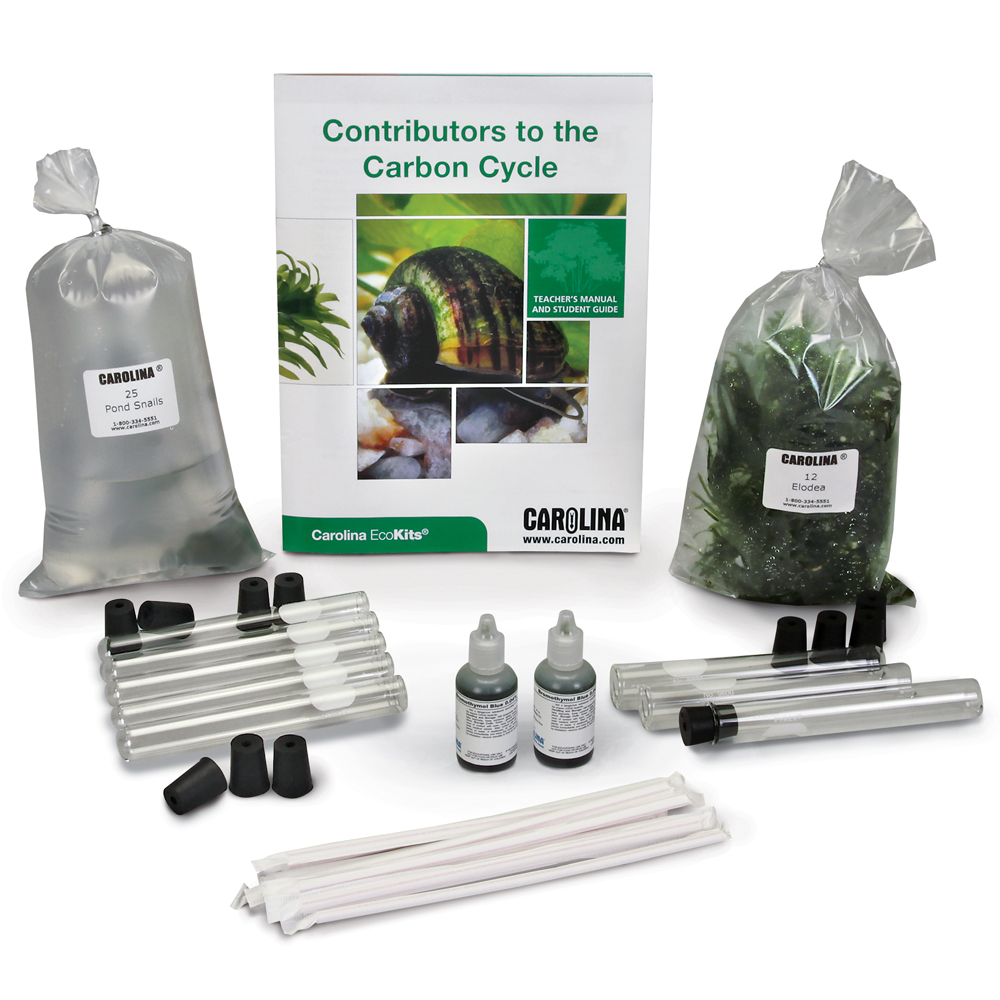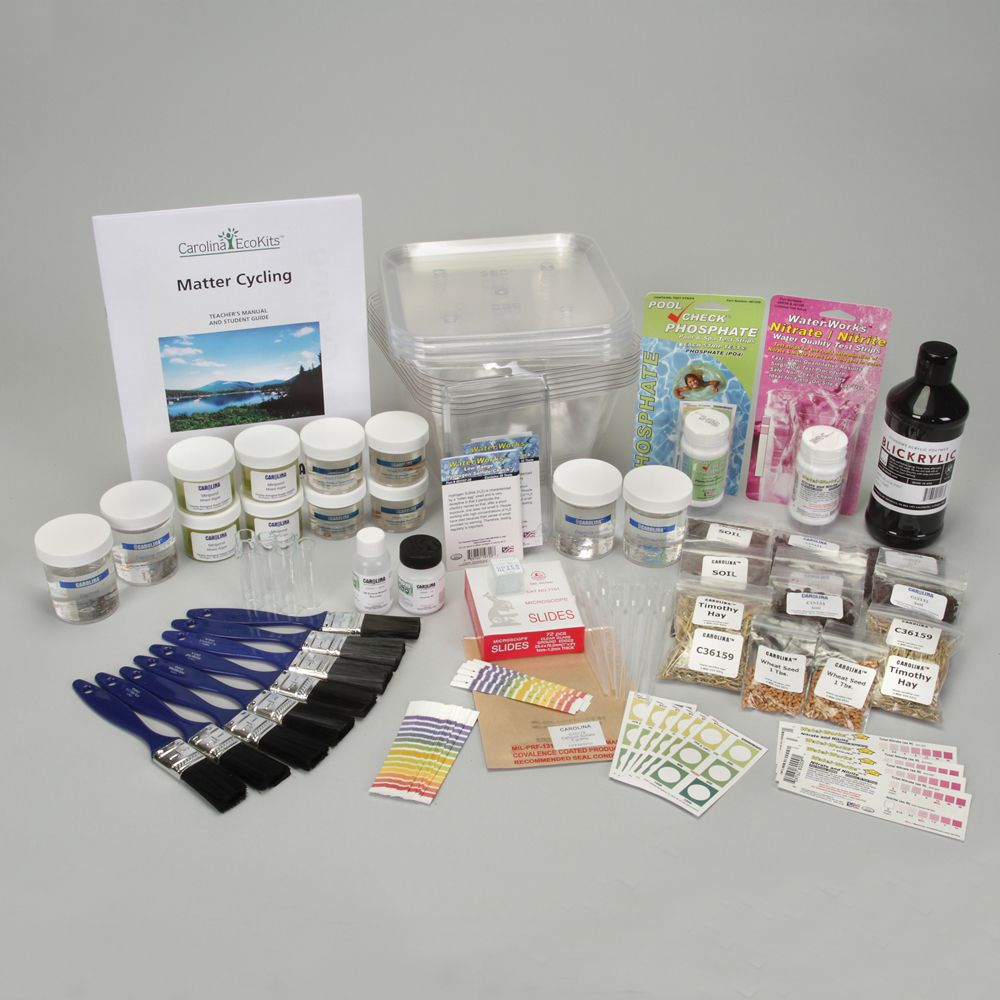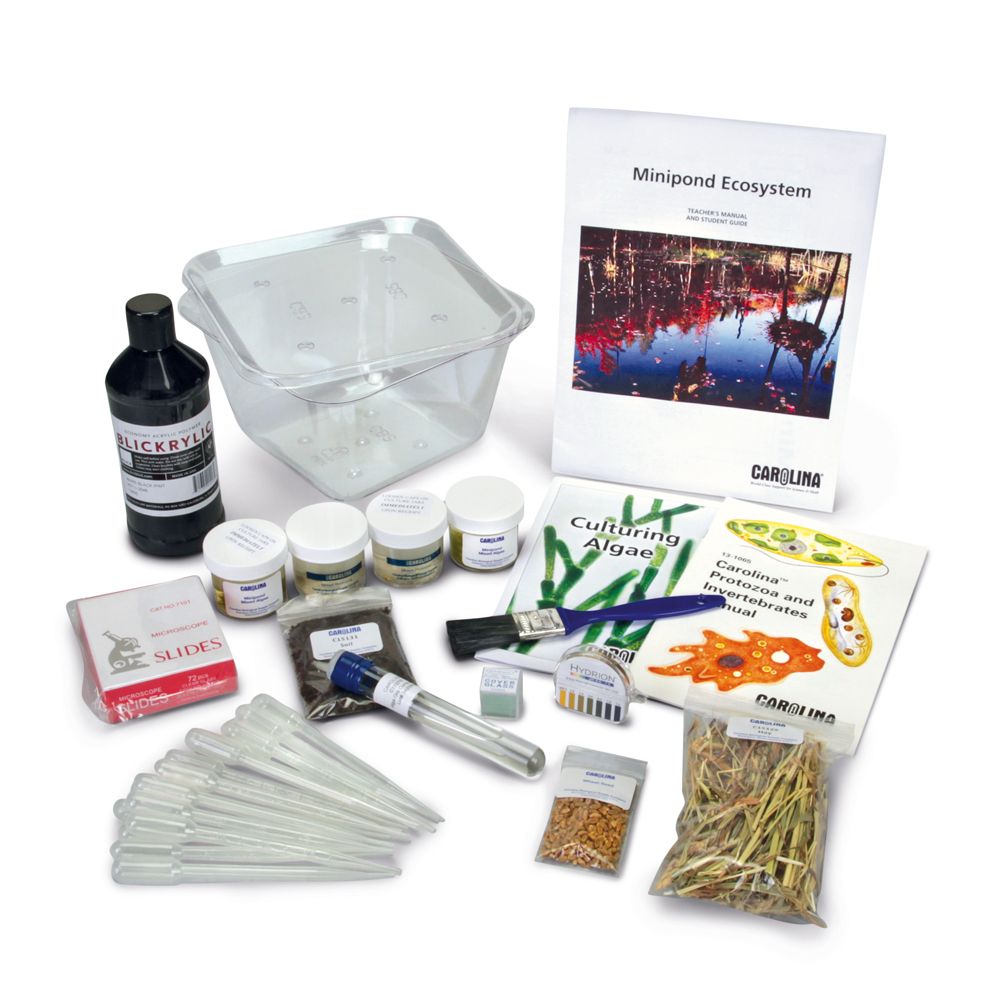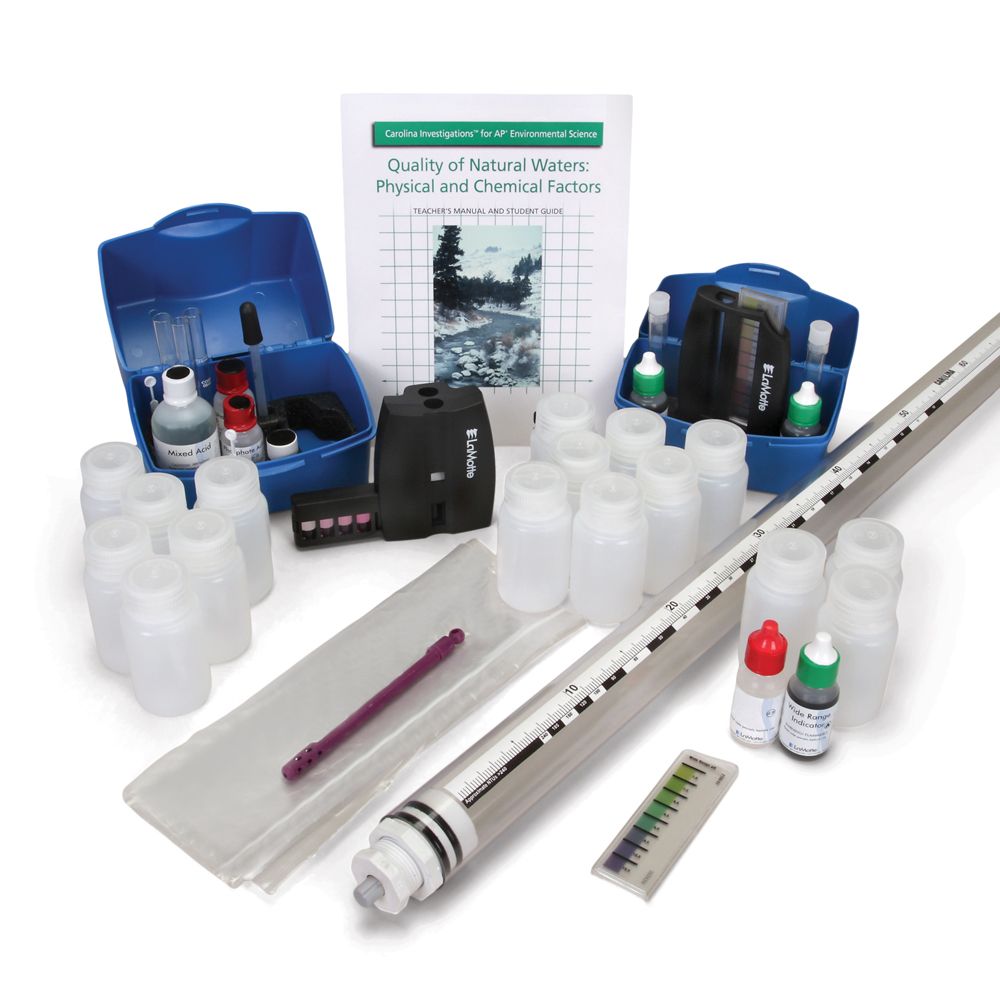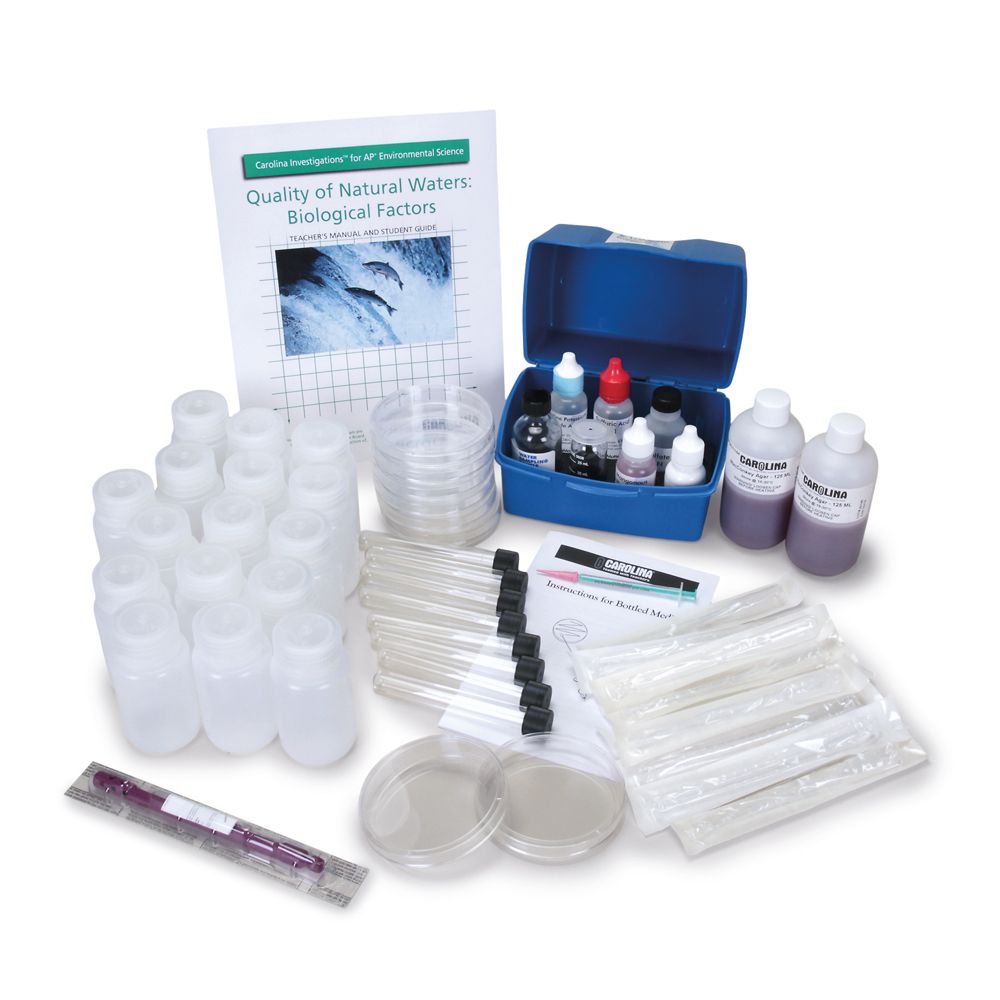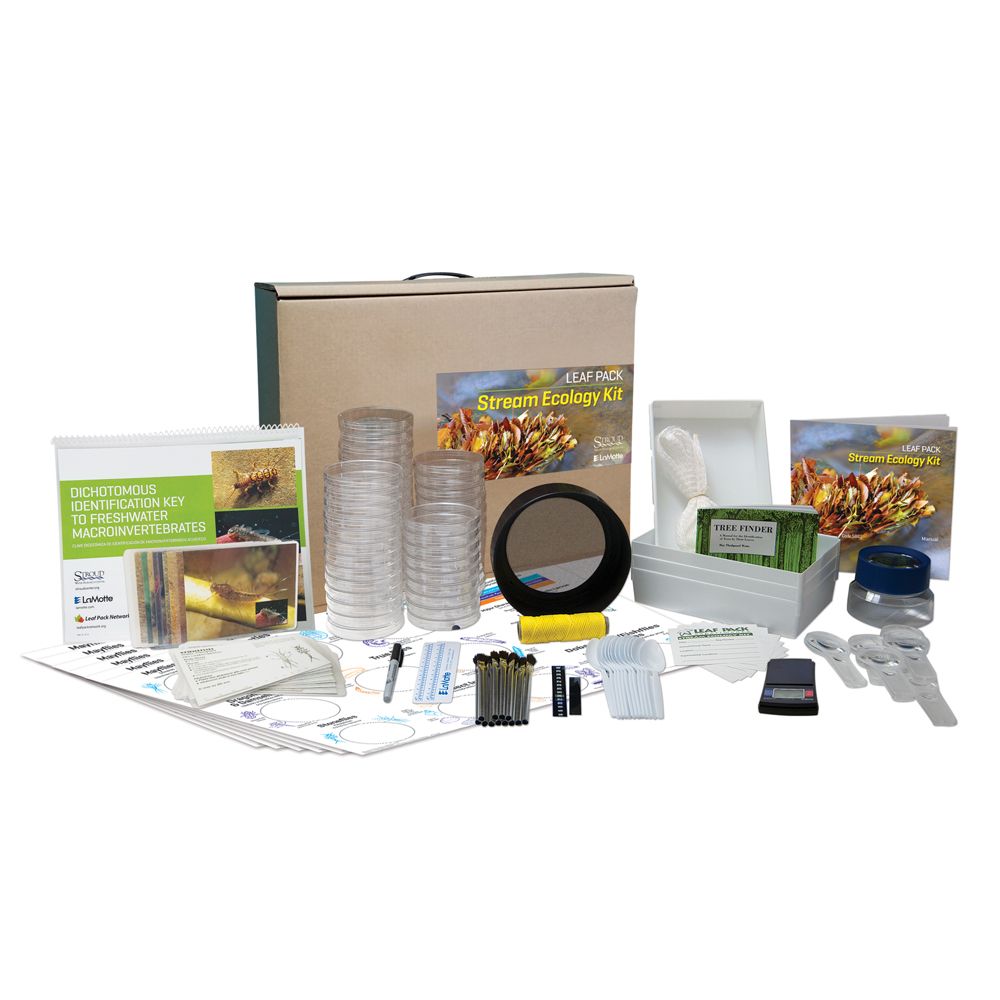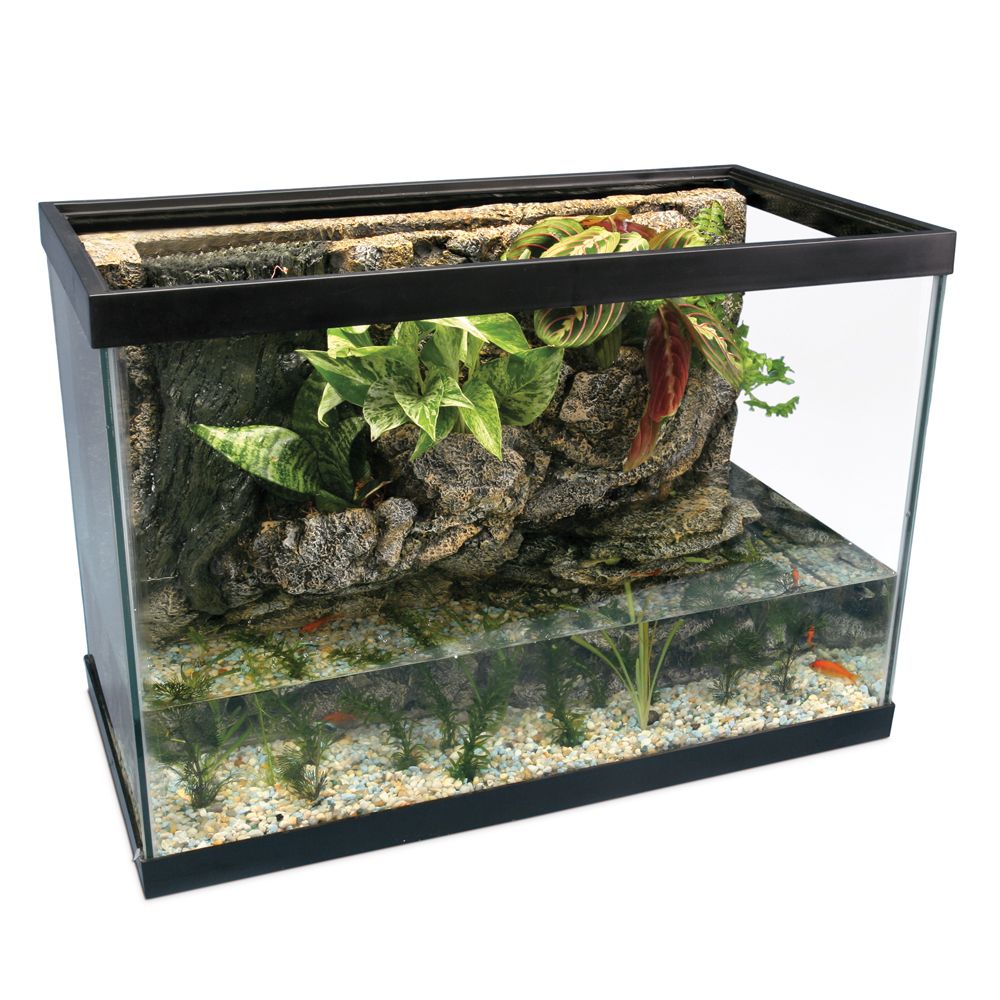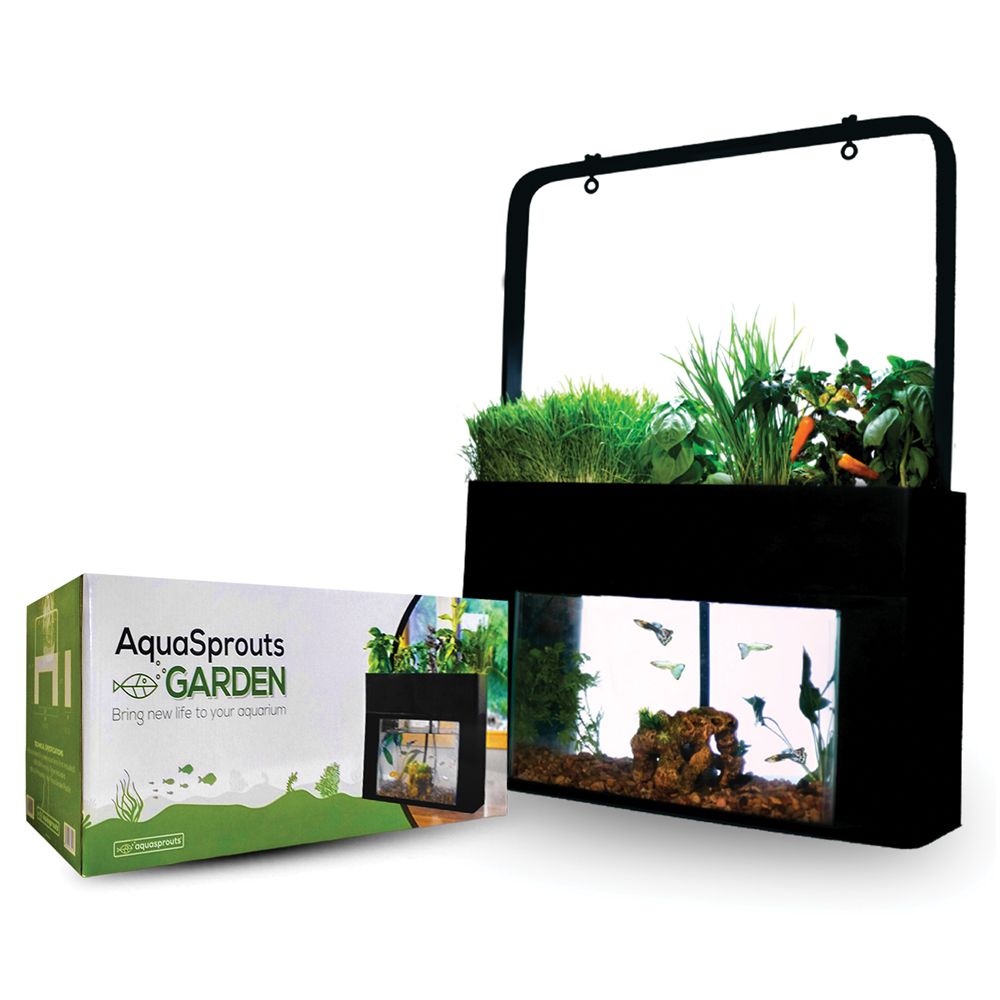Ecology is the foundational study of how organisms interact with each other and the planet. A complete study of ecology may include investigating the biotic and abiotic factors of biomes, the structures of ecosystems, the processes at work within ecosystems, interactions among species in an ecosystem, and ecosystem sustainability.
This complex topic is broken down into three sections: ecosystem structure, ecosystem interactions, and ecosystem sustainability. This guide on ecosystem structure breaks down the important information students need to know, provides links to products and free digital resources, and includes suggestions for hands-on labs that reinforce student learning.
We have gathered a variety of products and resources to better help you teach this concept. They include:
- Models and manipulatives to simplify teaching ecosystem structure
- Investigations of ecosystem processes
- Free resources for you and your students
The major areas covered in this topic are:
Ecosystem Structure
Ecosystem structure is a description of both the abiotic and biotic factors in an ecosystem. As students explore the phenomenon of how ecosystems change over time, they observe how living and non-living components change. The use of ecosystem models allows students to see changes to ecosystems in a classroom in a timely manner.
Changing Ecosystems Kit #187222
Beginning
Easy to Perform Requires little to no prior knowledge
Through a card game, students model the population changes of 9 species in a temperate forest community. They explore how changes in ecosystems due to factors such as habitat loss, pollution, overharvesting, climate change, and the establishment of an invasive species can lead to a loss of biodiversity. Over the course of this lab, students collect evidence on their way to finding answers to the driving question, “What factors result in ecosystem change?”
Succession in Hay Infusion Kit #187224
Intermediate
Easy to Perform Requires some background knowledge
Student observations and data collection take place over the course of 4 to 6 weeks as students strive to answer the driving question, “How do biological communities in a model pond ecosystem change over time?” During the experiment, students set up a minipond using a hay infusion, protist cultures, and algae cultures to model a pond ecosystem. Student collect evidence about changes in abiotic and biotic factors. Groups also create microscale pond models from test tubes to determine how changes would impact the ecosystem.
Carolina EcoKits®: Ecological Succession #187110
Intermediate
Easy to Perform Requires some background knowledge
Students create a simulated pond using 2 culture mixtures and then identify the protists and algae found in their pond using a dichotomous key. Sampling the top, middle, and bottom of the pond, students compare the biodiversity of the various layers using both species richness and the Simpson index for biodiversity.
Inquiries in Science®: Simulating Succession #251409
Intermediate
Easy to Perform Requires some background knowledge
Students set up and observe an ecosystem advancing through the stages of ecological succession. They then use these observations to track changes and predict the outcome of their ecosystem. As a final activity, students modify their simulation to represent a disturbance and show how it affects the successional sequence.
Ecosystem Processes
Within ecosystems numerous processes occur. Ecosystem processes describe these different processes, including physical, chemical, and biological processes.
Matter Cycling and Energy Transfer in Lake Ecosystems #187114
Beginning
Easy to Perform Requires little to no prior knowledge

Students begin with the phenomenon of a fish kill that occurred in Lake Erie in late summer. Students strive to make sense of this phenomenon by gathering evidence through investigations, readings, and digital resources. Throughout the investigations, students develop and revise their claim surrounding the causes of the fish kill. At the conclusion of the lesson, students will use the evidence gathered to construct a final explanation for how changes in the lake ecosystem caused changes in matter cycling and energy transfer that, in turn, led to the fish kill.
Food Chains and Energy Flow Kit #187104
Beginning
Easy to Perform Requires little to no prior knowledge
Students are introduced to an aquatic food web diagram that has 3 missing “mystery” organisms. After drawing inferences about those mystery organisms, a microscopic investigation is done to solve a “who eats whom” mystery. Students have a chance to revise any cases of mistaken identity. Next, students conduct and interpret a model of energy flow through a food chain. They perform calculations then they consider how the model could be improved. Throughout, students seek to construct and refine their understanding of energy flow and matter cycles to answer the driving question, “How does energy flow through food chains in an ecosystem?”
Primary Consumer Energy Flow Kit #181079
Advanced
For experienced high school and college classes
Requires some technical skill and background knowledge
Students create a simulated pond using 2 culture mixtures and then identify the protists and algae found in their pond using a dichotomous key. Sampling the top, middle, and bottom of the pond, students compare the biodiversity of the various layers using both species richness and the Simpson index for biodiversity.
Carolina EcoKits®: Biodiversity #187102
Beginning
Easy to Perform Requires little to no prior knowledge
As an alternative to measuring energy flow through primary productivity, students measure the transfer of energy at a higher trophic level and modify environmental conditions to explore their effects on energy consumption. In this lab, Vanessa cardui (painted lady butterfly) larvae, representing a primary consumer, feed on a growth medium that represents a primary producer. Students investigate how efficiently developing butterflies convert food into body mass. They then analyze results, calculate efficiency, and build food chains by constructing ecological pyramids.
Carolina Investigations® for AP® Environmental Science: Biogeochemical Cycles #181061
Intermediate
Easy to Perform Requires some background knowledge
Students study the biogeochemical cycles at work in a miniature aquatic ecosystem. They set up a gallon aquarium, then–each week–measure water loss, temperature, and levels of pH, nitrite/nitrate, phosphate, and hydrogen sulfide. They also observe and record changes in biodiversity each week. After 2 weeks, students design and implement an experiment to manipulate a parameter of the ecosystem and, in the following weeks, observe the effects on the system.
Nutrient Cycles
Explore the ways nutrient cycles can be modeled and studied to determine how biotic and abiotic factors affect cycle feedback loops.
Contributors to the Carbon Cycle Kit #187100
Beginning
Easy to Perform Requires little to no prior knowledge
Students explore the phenomenon of biologically balanced water gardens by exploring the cycling of carbon through an aquatic system. They use elodea and aquatic snails as model organisms as they seek to understand how both heterotrophs and autotrophs impact the carbon cycle through photosynthesis and cellular respiration. Students collect data to address the driving question, “How can we use evidence to model the ways in which plants and animals can maintain a freshwater aquarium system?”
Carolina EcoKits®: Matter Cycling #187112
Beginning
Easy to Perform Requires little to no prior knowledge
Investigate biogeochemical cycles at work in a minipond ecosystem. Students measure temperature, water loss, pH, and sample biodiversity each week. They examine water quality by testing levels for phosphate, hydrogen sulfide, and nitrite/nitrate within each ecosystem. They learn how this environment (and each parameter) links to the biogeochemical or matter cycle.
Inquiries in Science: Exploring the Nitrogen Cycle Kit #251010
Beginning
Easy to Perform Requires little to no prior knowledge
Students observe plant responses including phototropism, gravitropism, and nastic movement. Effective inquiry-based learning techniques help students explore photosynthesis and respiration, after which they design and perform their own scientific investigations.
Ecosystem Models and Simulations
Explore ecosystems with models and simulations that change over time like natural ecosystems.
Carolina EcoKits®: Build Your Own Microcosm #187012
Beginning
Easy to Perform Requires little to no prior knowledge
Using this inquiry-based kit, students create an enclosed aquatic ecosystem that allows them to observe biogeochemical and life cycles. Students observe this ecosystem, known as a microcosm, and identify ecological relationships. They are then challenged to find the answer to a fundamental question: “What factors can determine whether an ecosystem will succeed or fail?”
Minipond Ecosystem Kit #131207
Intermediate
Easy to Perform Requires some background knowledge
An outdoor habitat for microorganisms. This maintenance-free habitat simulates a pond, yet can be brought into the classroom for study of microscopic algae and protists. Activities include discovering pond traffic and observing the organisms’ shapes and feeding habits.
Comprehensive Ecosystem Kits
Quality of Natural Waters: Physical and Chemical Factors Kit #180602
Advanced
For experienced high school and college classes
Requires some technical skill and background knowledge
In this lab activity, students monitor water and determine the Water Quality Index (WQI) for local test sites. They test samples from each site for turbidity, nitrates, phosphates, pH, and temperature change.
Quality of Natural Waters: Biological Factors Kit #180600
Advanced
For experienced high school and college classes
Requires some technical skill and background knowledge
This lab activity enables students to monitor water quality and determine the Water Quality Index (WQI) for several local test sites. Students gather samples and test for dissolved oxygen, coliform bacteria, biochemical oxygen demand, total solids, and change in temperature.
Models and Other Products
Carolina offers a variety of 3-D models to fit your needs. Check out our selection of products to supplement your ecosystem lessons.
Additional Ecology Support
We have free resources to help you teach this concept, including:
- Free activities
- How-to videos
- Helpful buying guides
Free 3-D/NGSS Activities for Ecosystem Processes
Carolina Essentials™ are free, hands-on, NGSS-based activities. These activities are designed to make implementing 3-D learning easy. Students make sense of phenomena while learning concepts essential for understanding ecosystem processes. You can browse all of these Carolina Essentials or try one of these:
Support Videos
Unsure how to set up a river tank or care for aquatic snails? These videos can help.
Buying Guides
Choosing the appropriate equipment for your labs can be a challenging task. Our buying guides are designed to make your decisions easy. Review Carolina Recommended Microscopes or our Ultimate Lab Basics Buying Guide.
For More Guidance
These are our top picks. If you don’t see what you’re looking for, we’ll be happy to help you find the right activities and kits to simplify your planning and implementation. If you have questions, please contact us at product@carolina.com.
About The Author
Carolina Staff
Carolina is teamed with teachers and continually provides valuable resources–articles, activities, and how-to videos–to help teachers in their classroom.



